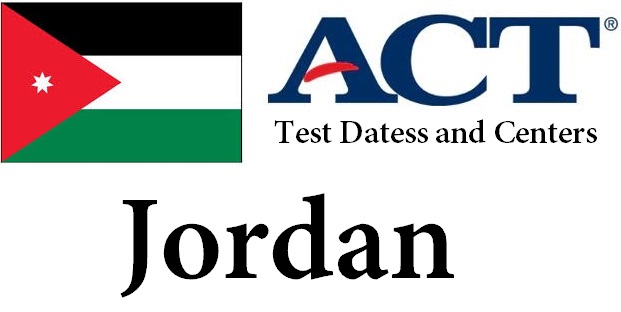Your search found 1 match. The following is the full list of ACT testing locations in Jordan among which you can pick one to take the exam. Please know that on the test day, test takers can use any 4-function, scientific, or graphing calculator. On the table below, you can also find all test dates through 2019.

2019-2020 ACT Test Dates in Jordan
| Test Date | Registration Deadline |
| February 9, 2019 | January 11, 2019 |
| April 13, 2019 | March 8, 2019 |
| June 8, 2019 | May 3, 2019 |
| July 13, 2019 | June 14, 2019 |
| September 14, 2019 | August 16, 2019 |
| October 26, 2019 | September 20, 2019 |
| December 14, 2019 | November 8, 2019 |
| February 8, 2020 | January 10, 2020 |
| April 4, 2020 | February 28, 2020 |
| June 13, 2020 | May 8, 2020 |
| July 18, 2020 | June 19, 2020 |
ACT Test Centers in Jordan
| City | Center Name | Center Code |
| Amman | Amman Baccalaureate School | 867016 |
More about Jordan
Business
With a gross national income (GNI) of US $ 3,980 per resident (2017), Jordan is one of the middle-income developing countries. As a result of the occupation of the West Bank by Israel in 1967, Jordan lost its economic core area, which accounted for a large part of the fruit and vegetable cultivation area as well as half of the industrial production and tourism. In 1988 Jordan officially renounced the West Bank in favor of the PLO. Jordan’s export economy is still heavily dependent on global economic and political developments. The drastic decline in remittances by migrant workers and development aid payments caused by the Gulf Wars plunged Jordan into a severe economic crisis since 1989. Reform programs and the peace agreement with Israel have had a positive effect since 1994. The reforms focus on: the extensive privatization of formerly state-owned companies and the establishment of special economic zones (qualifying industrial zones). Bank transfers from overseas Jordanians are of great importance. The economic growth is (2016) 2.1%, the – official – unemployment rate (2015) 13.1%. The public external debt reached (2015) a level of 25.7 billion US $.
Foreign trade: The Jordanian trade balance is chronically negative (import value 2016: 19.2 billion US $, export value: 7.5 billion US $). The main exports are natural phosphates and potash, chemical products, textiles, fruit and vegetables. Import goods include Industrial products, food, machinery and transportation equipment, minerals and fuels. The most important buyers of Jordanian goods are the USA, Saudi Arabia, Iraq and India, the most important suppliers are China, Saudi Arabia, the USA and Germany.
Agriculture
Only 2% of the workforce is employed in agriculture; they generate (2016) 4.3% of GDP. Because of the strongly fluctuating amounts of precipitation, only 12.0% of the country’s area can be used for agriculture. In the Jordan Valley (in the Ghor), irrigation agriculture plays a major role; however, cultivated areas are increasingly falling victim to soil salinization. Vegetables, wheat, melons, bananas and citrus fruits are grown. In the central part of the East Jordanian mountains, with sufficient rainfall, cereals, tobacco, olives, figs, pomegranates, etc. cultivated. The basis of life for the half and full nomads is livestock farming (sheep, goats, cattle, donkeys and mules, camels, horses), but it does not cover the country’s meat needs.
Service sector
During the chaos of war in Lebanon, many western industrial and commercial companies as well as banks relocated their headquarters from Beirut to Amman, which led to an upswing in the service sector (share of GDP in 2016: 66.8%).
Tourism: The economically very important tourism is concentrated in the historical cities of Petra and Djerash , two thirds of the hotel capacity are in Amman. The port city of Akaba on the Red Sea has been developed into a tourist center. The number of visitors (2014: 5.3 million) fluctuates very strongly due to the unstable situation in the Middle East.
Industry
In the industrial sector (including mining and energy) around 17% of the workforce generate 28.9% of GDP. The most important industrial companies are the fertilizer factory near Akaba and the oil refinery in Zerka, there are also small and medium-sized companies in the pharmaceutical, food, textile, clothing and shoe industries.
Natural resources
An important industry is the phosphate mining northeast and south of Amman. The salt deposits in the Dead Sea (e.g. for the extraction of potash), oil shale and newly discovered oil deposits in the south of the country are also economically significant.
Transportation
The road network as the most important mode of transport has a length of 7,200 km and is particularly well developed in the densely populated northwest. The railroad is only important for the transport of phosphate to the port city of Akaba on the Red Sea. Akaba is the only port that allows Jordan to be connected to the sea. After the reopening of the Suez Canal in 1975, but especially during the Gulf Wars, it experienced a significant boom as a supply port for Iraq. There are international airports in Amman and Aqaba.

